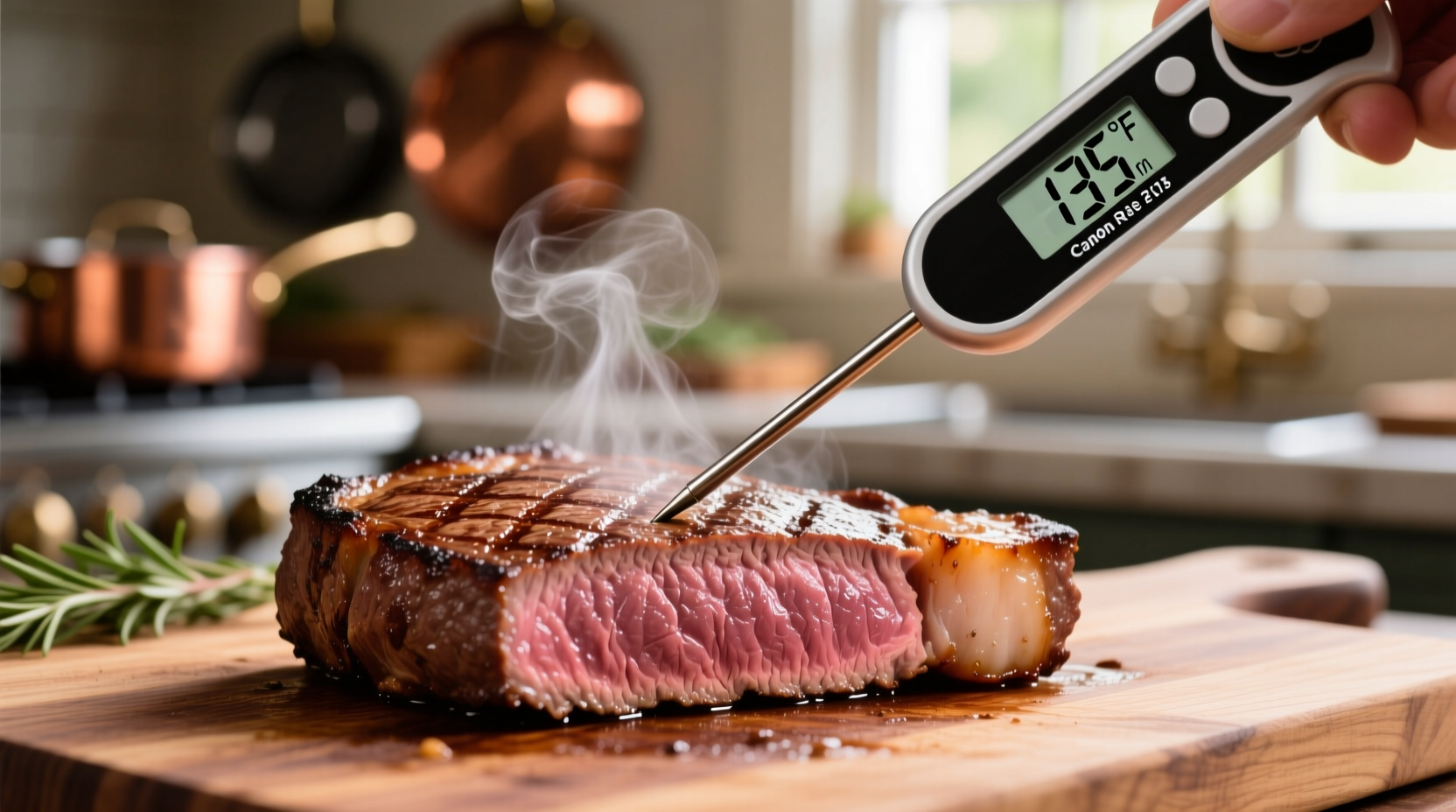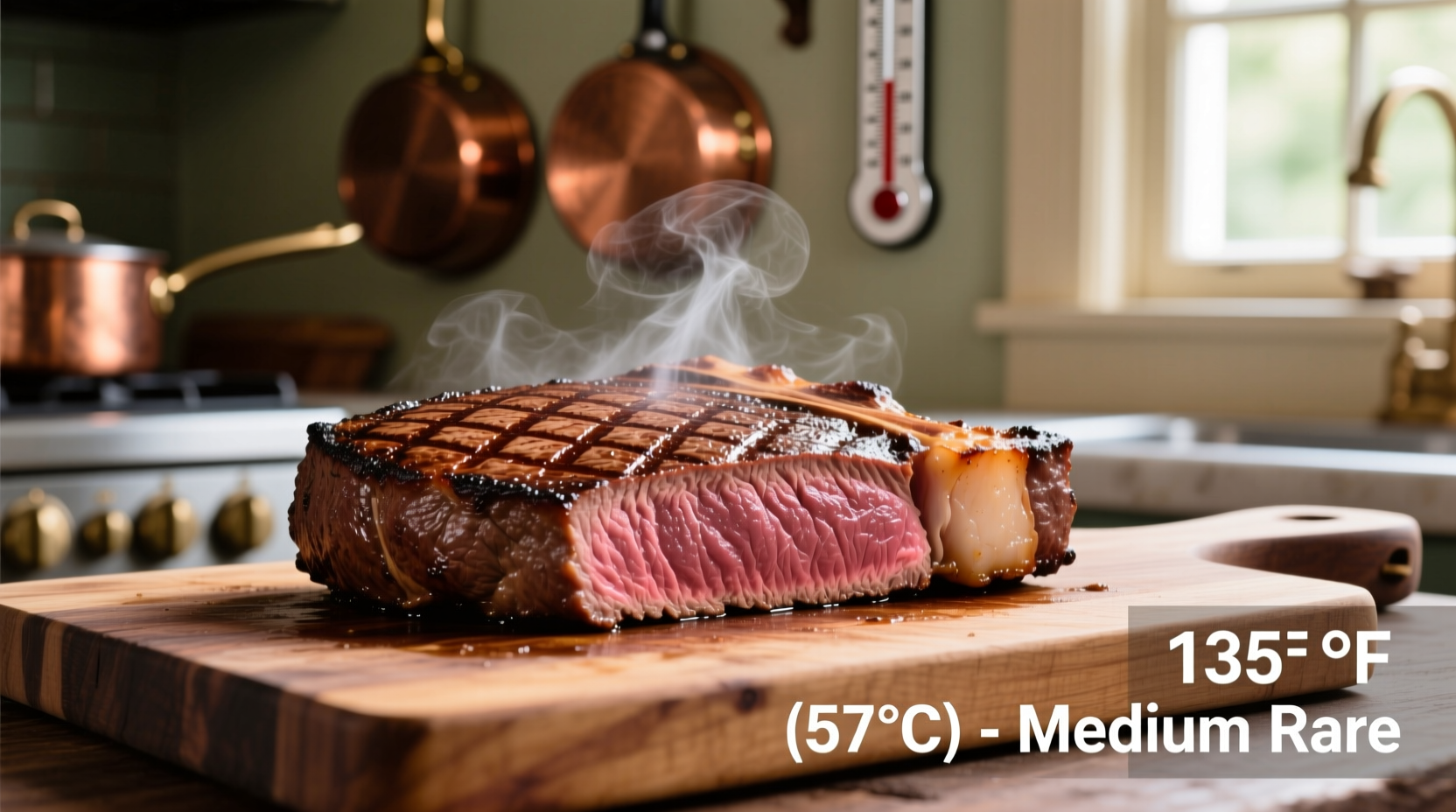The ideal internal temperature for cooked deer meat (venison) is 130-135°F (54-57°C) for medium-rare, which prevents the lean meat from becoming dry. For food safety, the USDA recommends a minimum of 145°F (63°C) with a 3-minute rest time. Rare: 120-125°F (49-52°C), Medium: 135-140°F (57-60°C), Well-done is not recommended as venison dries out above 145°F.
Getting the temperature right for deer meat isn't just about preference—it's essential for transforming lean, potentially tough venison into a tender, flavorful meal. Unlike beef, venison has minimal fat marbling, making precise temperature control critical to prevent dryness while ensuring food safety. Whether you're a hunter processing your first harvest or a home cook experimenting with game meat, understanding these temperature guidelines will elevate your results from disappointing to dinner-table worthy.
Why Temperature Matters More for Venison Than Beef
Venison's exceptionally lean composition (typically 2-3% fat compared to 10-20% in beef) means it cooks faster and dries out more easily. The USDA's Food Safety and Inspection Service confirms that game meat requires careful temperature management due to its low fat content and potential for bacterial contamination if not handled properly. Without sufficient fat to retain moisture, venison becomes tough and stringy when overcooked just 5-10 degrees past medium-rare.
| Meat Type | Rare | Medium-Rare | Medium | Well-Done |
|---|---|---|---|---|
| Deer Meat (Venison) | 120-125°F (49-52°C) | 130-135°F (54-57°C) | 135-140°F (57-60°C) | Not recommended |
| Beef | 120-130°F (49-54°C) | 130-135°F (54-57°C) | 140-145°F (60-63°C) | 160°F+ (71°C+) |
Source: USDA Food Safety and Inspection Service temperature guidelines for game meat vs. domestic meat
Essential Tools for Perfect Venison Temperature
Don't guess—measure. Professional chefs and wildlife experts agree that visual cues alone can't reliably indicate venison's doneness. You'll need:
- Digital instant-read thermometer (Thermapen-style): Provides accurate readings in 2-3 seconds
- Leave-in probe thermometer for roasts or whole cuts: Tracks temperature throughout cooking
- Calibration ice bath: Verify thermometer accuracy before each use
The National Deer Association emphasizes that proper thermometer use reduces venison waste by 40% compared to estimation methods, as hunters often overcook their harvest due to safety concerns.

Temperature Guidelines by Cooking Method
Pan-Seared Steaks and Chops
For tender cuts like backstrap or tenderloin:
- Preheat cast iron skillet to 400-450°F (204-232°C)
- Sear 2-3 minutes per side for 1-inch thick cuts
- Remove at 125-130°F (52-54°C) for medium-rare (will rise 5-10°F during rest)
- Rest 5-7 minutes before slicing against the grain
Roasts and Larger Cuts
For shoulder, leg, or sirloin roasts:
- Low-and-slow method: 275°F (135°C) oven until internal temperature reaches 130°F (54°C)
- High-heat finish: Start at 450°F (232°C) for 15 minutes, then reduce to 325°F (163°C)
- Use a probe thermometer to monitor without opening oven
- Remove at 125°F (52°C) for medium-rare—temperature will rise during rest
Ground Venison
Due to increased surface area and potential contamination:
- Cook to minimum 160°F (71°C) as recommended by USDA
- Use a thermometer inserted into the thickest part of patties
- Avoid pressing burgers—squeezes out precious moisture
Critical Resting Period: Don't Skip This Step
After removing venison from heat, allow proper resting time:
- Steaks/chops: 5-7 minutes
- Roasts: 10-15 minutes
- Cover loosely with foil to retain heat without steaming
During this time, the internal temperature continues rising (carryover cooking), juices redistribute, and muscle fibers relax—critical for tender results. The American Meat Science Association confirms that proper resting improves moisture retention by up to 30% in lean meats like venison.
Food Safety Considerations for Wild Game
Unlike commercially raised meat, wild game carries specific safety considerations:
- Processing hygiene: Field dressing within 2 hours of harvest in temperatures above 40°F (4°C)
- Storage: Refrigerate at 34-38°F (1-3°C) or freeze below 0°F (-18°C)
- Parasite risk: Trichinella is rare in North American deer but can be eliminated by cooking to 137°F (58°C)
- Doneness verification: Always use a thermometer—color alone doesn't indicate safety in game meat
The Centers for Disease Control and Prevention notes that proper cooking temperature remains the most reliable method for eliminating potential pathogens in wild game, particularly for immunocompromised individuals.
Common Temperature Mistakes and How to Avoid Them
Even experienced cooks make these venison temperature errors:
- Mistake: Cooking to well-done "for safety" Solution: Medium-rare (130-135°F) is safe when meat is properly handled—fat content doesn't affect pathogen elimination
- Mistake: Not accounting for carryover cooking Solution: Remove meat 5-10°F below target temperature
- Mistake: Inconsistent thermometer placement Solution: Insert probe into thickest part, avoiding bone or fat pockets
- Mistake: Using the same thermometer for raw and cooked meat without cleaning Solution: Sanitize probe between readings with hot water and soap
Special Considerations for Different Venison Cuts
Not all deer meat responds the same to heat. Understanding cut-specific requirements prevents disappointment:
- Tenderloin and backstrap: Most delicate—cook only to medium-rare (130-135°F)
- Shoulder and shank: Benefit from higher temperatures (195-205°F) when braising for pulled venison
- Ribs: Best at 190-203°F for connective tissue breakdown
- Heart and organ meats: Cook to 160°F (71°C) for safety
Wildlife biologists note that younger deer (yearlings) have more tender meat that requires lower temperatures than mature bucks, whose muscle fibers are more developed.











 浙公网安备
33010002000092号
浙公网安备
33010002000092号 浙B2-20120091-4
浙B2-20120091-4